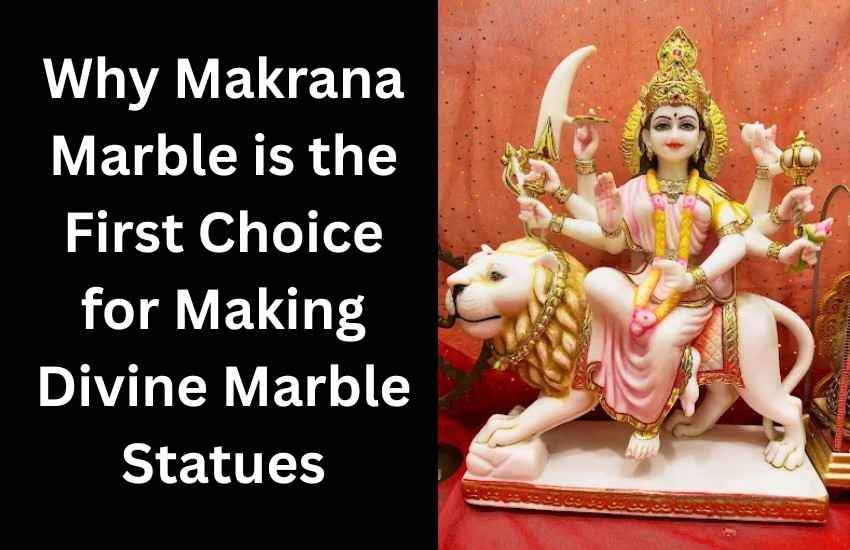In the world of spiritual art and sculpture, marble plays a pivotal role in bringing divine forms to life. Among the various types of marble available, Makrana Marble has stood the test of time as the most trusted and revered material. Whether it’s a Radha Krishna Marble Statue, a Hanuman ji marble murti, or a Ram Darbar marble murti, artisans and devotees alike prefer Makrana marble for its durability, shine, and spiritual purity. Being the same marble used in the construction of the Taj Mahal, its historical and cultural significance only adds to its reputation.
If you’re searching for a reliable manufacturer of marble moorti, chances are they’ll recommend Makrana marble for its superior quality and long-lasting elegance. This marble is also the top choice for creating a marble pooja mandir for home, as it adds a divine glow to the sacred space. In this article, we’ll explore why Makrana marble is the first choice for crafting divine statues and what makes it so special for religious and artistic creations.
-
The Legacy and Purity of Makrana Marble Statues
Makrana, a small town in Rajasthan, India, is world-famous for producing some of the finest white marble in the world. The Makrana marble has been used in iconic monuments like the Taj Mahal and the Victoria Memorial. What makes it stand out is its high calcium content and low water absorption rate, which ensures that the stone retains its whiteness and shine for generations.
When crafting spiritual statues like the Radha Krishna marble statue or Ram Darbar marble murti, the purity of the material is paramount. Makrana marble’s natural white glow and smooth texture make it ideal for sculpting deities, allowing intricate details to emerge gracefully.
-
Durability That Lasts Generations
Makrana marble is highly durable and resistant to weathering, moisture, and wear. This makes it a wise investment for those looking to purchase marble idols for long-term use, whether for homes, temples, or public places.

Manufacturers of marble moortis prefer Makrana because it maintains its shape and polish even after years of exposure. When devotees install a Hanuman ji marble murti or a marble pooja mandir for home, they want something that retains its divine charm for decades—and Makrana marble delivers exactly that.
-
Ideal for Intricate Carving
One of the reasons why sculptors love working with Makrana marble is its ability to withstand detailed carving. Whether it’s the gentle expressions of Lord Krishna or the dynamic posture of Lord Hanuman, this marble allows for fine chiseling without cracking or breaking.
Especially in complex designs like Ram Darbar marble murti, which includes multiple figures in a single composition, the stone’s strength and smoothness make it easier for artisans to showcase their craftsmanship. Each fold of clothing, each ornament, and each expression comes to life in Makrana marble.
-
Natural Shine and Aesthetic Appeal Marble Statues
Makrana marble has a natural luster that doesn’t require chemical polishing. This is crucial when creating divine sculptures, as many prefer using only natural materials and finishes for religious artifacts.
A Makrana marble moorti retains its brightness even after years, making it perfect for spiritual environments. Whether you’re placing it in a temple or your living room, the marble adds a serene, divine ambiance. This natural aesthetic appeal also makes it the ideal choice for a marble pooja mandir for home.
-
Cultural and Religious Significance
The spiritual energy associated with marble moortis is often believed to be affected by the quality of the material used. Makrana marble, because of its purity, is considered sacred and auspicious. It is believed that idols carved from this marble can better absorb and radiate divine energy during puja or worship.
This is why most renowned manufacturers of marble moorti in Jaipur, Nathdwara, and other parts of India consistently use Makrana marble. Temples and spiritual centers across India and abroad source their Radha Krishna marble statues and other idols from manufacturers who specialize in Makrana marble sculptures.
-
Low Maintenance and Long-Term Value
Unlike other types of marble or stone, Makrana marble requires very little maintenance. It resists yellowing and doesn’t lose its shine easily. Simply dusting the statue occasionally keeps it looking new.
For families and devotees who invest in a Hanuman ji marble murti or a large Ram Darbar marble murti, this low maintenance is a key advantage. These statues are often central to daily worship, and the ease of upkeep ensures they remain visually and spiritually vibrant for years.
-
Trusted by Artisans and Devotees Alike
Makrana marble has a long-standing reputation in the artisan community. Sculptors trust its quality, and buyers recognize its value. This shared trust creates a strong demand in both domestic and international markets for Makrana marble statues.
A trusted manufacturer of marble moorti will often proudly declare their use of Makrana marble because it assures customers of quality, authenticity, and durability. Whether it’s a temple inauguration, a housewarming ceremony, or gifting during festivals, Makrana marble statues are a popular and respected choice.
Conclusion
Makrana marble is not just a stone; it’s a symbol of purity, tradition, and divine connection. From Radha Krishna marble statues to Hanuman ji marble murti and marble pooja mandirs for home, this exquisite marble enhances the spiritual atmosphere with its brilliance and beauty. Its durability, purity, and ability to bring intricate details to life make it the preferred material for religious sculptures across India and the world.
So, the next time you plan to bring a divine presence into your home or temple, make sure to choose a Makrana marble moorti from a trusted manufacturer of marble moorti.

